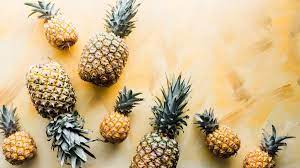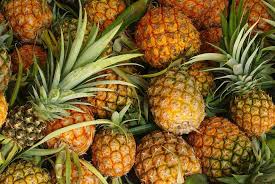HOW TO START A SUCCESSFUL PINEAPPLE FARMING OPERATION NOW


Pineapples are sweet, nutritional and can be used in a variety of ways in home cooking. Moreover, pineapples are regularly purchased in bulk by food manufacturers who turn the fruit into various beverages, sweets, baked goods and other food products.
Pineapples rank second on the list of the most consumed fruits in the world and constitute up to 20% of the world’s production of all tropical fruits. Since the 1960’s, the level of pineapple farming has increased dramatically. The fruit popularity in the world can be explained by the breeding of new species, in particular one that is referred to as “Gold“. The fruit is now prepared, canned and consumed in various forms such as pineapple chunks, slices, juices, jams, marmalade, crushed and dried pineapples. Pineapples are also used in cereals and as a snack food. Pineapple fruits are also a good source of dietary fiber, vitamin A, vitamin B, vitamin B6, Copper and Manganese.
SOIL
The soil for pineapple farming should b well drained and slightly acidic in nature with pH levels around 4.5 to 6. The soil has to be light and can be sandy, alluvial or lateritic but not heavy clayey soil. The fruit is suitable for cultivation either near the seacoast or inland areas but the minimum temperature ranges should be in between 15.5 to 32 degrees C. The plants flower from February till April and bears fruit from July till September.


HARVESTING
Pineapple plants get ready for harvest in 2 to 2.5 years. Flowers appear after 12 months from planting and fruits appear after 15 or 18 months. The ripening of fruits occur after 5 months from flowering. The fruits for table use are harvested when completely ripe whereas the fruits for canning are harvested at an early stage. Each variety has a different eye color in the fruit indicating its maturity or ripening level.
PINEAPPLE VARIETIES
Kew – It is a leading commercial variety valued particularly for canning. Its fruits are big sized (1.5 – 2.5 kg) oblong and tapering slightly to the crown. The fruit with broad and shallow eyes becomes yellow when fully ripe.
Gian Kew – The variety is synonymous with Kew except for the size of plant and fruit which are larger than Kew as the name signifies.
Charlotte Rothschild – The fruit is similar in taste and other characters to that of Kew.
Queen – Its fruit are rich yellow in color, weighing 0.9 – 1.3 kg each. The flesh is deep golden – yellow, less juicy than Kew, crisp textured with a pleasant aroma and flavor.
Mauritius – It comes medium in size, its fruits are deep yellow and red. Yellow fruits are oblong, fibrous and medium sweet compared with red ones.This is ideal for table purposes.
Jaldhup & Lakhat – Both are under the Queen group with fruits smaller than Queen. Lakhat is markedly sour in taste, whereas Jaldhup has its sweetness well- blended with acidity.
Generally, commercial pineapple farming demands sufficient area of land and proper irrigation facility. In addition to that, the farm must have proper arrangements for plant protection. In this business, you can expect a substantial ROI and quick payback but you will need a well-structured farming business plan to get you going.
IF YOU NEED PROFESSIONAL HELP WITH A BANKABLE FARMING BUSINESS PLAN AND BUSINESS ASSISTANCE CONTACT US NOW AT +27 84 583 3143 OR EMAIL – money@global.co.za
HOW TO START A SUCCESSFUL PINEAPPLE FARMING OPERATION NOW Read More »